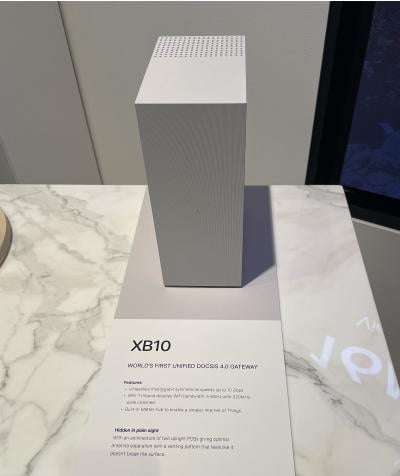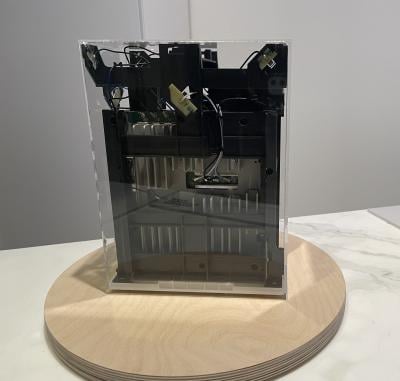If you’ve been in this industry long enough, you probably have a certain idea of what ‘convergence’ means. That idea likely revolves around the marriage of wireless and wireline or the way certain services can be packaged together (ahem, Charter). But that’s not quite what Comcast means when it uses the term.
The message that emerged from Comcast Converge this week was that everything the company does – mobile, video, sports streaming, security and, of course, broadband – relies on the performance of its network infrastructure. By extension (given the fact that no one has plugged anything into a router to connect to the internet in ages), that means Wi-Fi.
Techsponential Lead Analyst Avi Greengart told me at the event he was shocked by the fact that mobile barely got a mention in the hour and a half long presentation the crowd sat through given Comcast has a high-profile and highly successful MVNO play. The thing is, wireless technology was actually the star of the show in a way.
The way Comcast is thinking about convergence is probably best exemplified with this statistic: The first NFL playoff game which was exclusively streamed on its Peacock service in January accounted for a whopping 30% of all U.S. internet traffic. Think about that and what that means as more entertainment shifts to streaming and other internet-based services. Not only do ISP networks have to be up to the task, but the in-home experiences they deliver via Wi-Fi also have to be.
"Even now there are moments that show us where we're headed," Comcast Cable CEO Dave Watson said. "Like how a new video game can create a traffic spike of up to 20% on our network. Or how mixed reality requires higher performance and lower latency. You can see it when daily exercise equipment usage on the network jumps by 20% from December to the first week of January."
But as Greengart noted, while analysts fret about what cord-cutting means for the company, Comcast is embracing the cordless future with open arms. See also: its new XB10 broadband gateway.
Gateway to the future

Comcast offered a first look at its XB10 Wi-Fi router, which it said will be the first to be compatible with Wi-Fi 7 and both flavors of DOCSIS 4.0. It uses an artificial intelligence-enabled Broadcom chipset (which was announced in October 2023) and contains three radios, each capable of connecting 100 devices simultaneously with multi-gig speeds.
Why support for hundreds of devices? Well, during the event, Comcast Global Chief Product Officer Fraser Stirling said that today, the average home has about 30 devices connected to the network. But that figure is expected to ramp “considerably” over the coming years.
Kunle Ekundare, Senior Director of Product Development, added that while there are only a handful of devices that support Wi-Fi 7 today “more are coming soon.” And the XB10 (and its FTTH counterpart the XER10) will be there ready to deliver symmetrical multi-gigabit broadband speeds wirelessly.
In short, XB10 is designed to be ready for the future, he said. It'll be available in the back half of this year.
Other Wi-Fi wonders

But Comcast is looking to do even more with its Wi-Fi.
The company talked up a forthcoming feature on its Xfinity app which will allow customers to use any internet connected device in their home as a motion sensor. Yes, you read that right. And yes, it’s both creepy and cool.
Customers will be able to choose which connected devices are used for this kind of monitoring. The app will alert them when motion is detected (presumably by somehow measuring physical signal interference) and show which device detected the movement.
This feature is set to be available in the fall.
Then there's a forthcoming 'Ultra Low Lag' tool which will allow customers to choose which devices on their home network to prioritize so that sensitive content - think games and live sports - comes through with the least amount of lag possible. Comcast said it is making this possible by opening its platform to the likes of Apple, Nvidia and others to allow them to flag latency sensitive content.
Comcast didn't give a release date for this feature, but said it will be available "soon."
Comcast is also planning to leverage its network of 23 million public Wi-Fi hotspots to offer a Wi-Fi Speed Boost service to its Xfinity Mobile customers. Charter Communications did something similar in 2022.
Basically, Xfinity customers will automatically be connected to Comcast’s Xfinity hotspots when they’re nearby. Those with newer devices will have access to speeds of up to 1 Gbps and even those with older phones will see a “noticeable” improvement in speed, a Comcast demo rep told me.
Not all of its 23 million hotspots will be available for Speed Boost from the jump, but the rep said “millions” will be. Or enough to make a “meaningful impact for customers at launch” at least.
More on this front is expected in the coming weeks.
You bet we'll be watching this kind of 'convergence' closely going forward.
